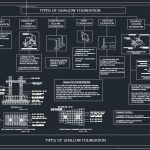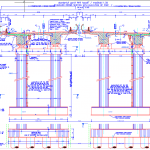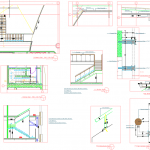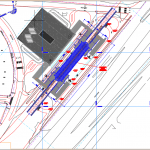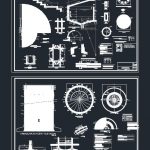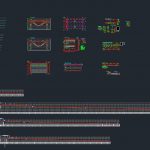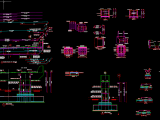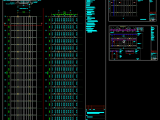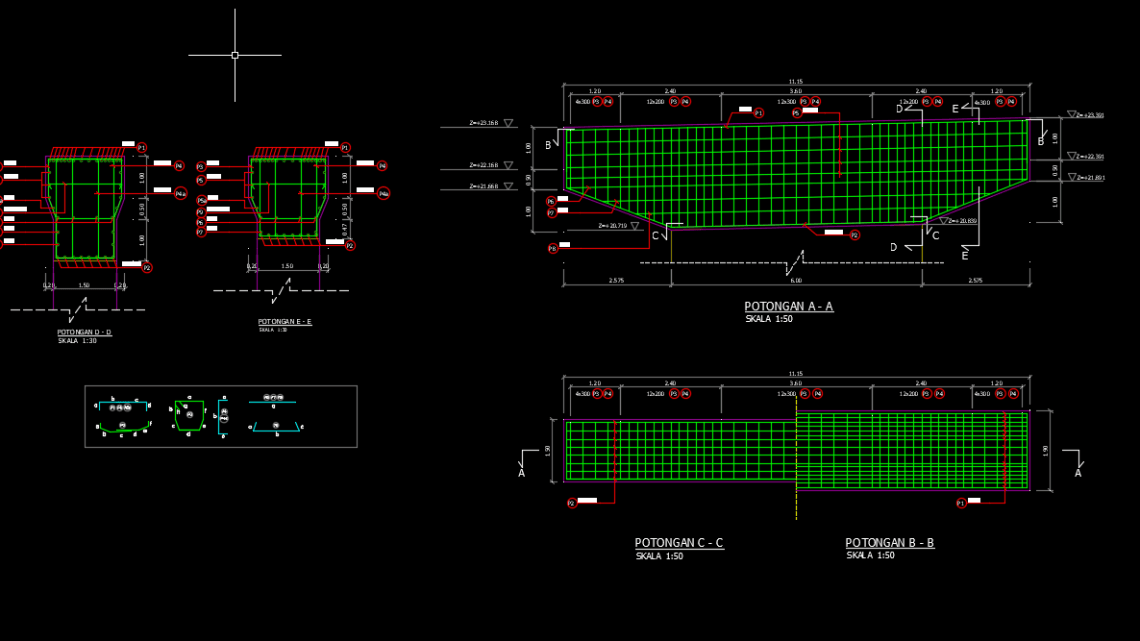
Pier Head Reinforcement details Free DWG
14 June 2019Table of Contents
Pier Head Reinforcement details Free DWG
Pier head reinforcement is a critical structural engineering technique used to enhance the durability, load-bearing capacity, and longevity of bridge piers, marine structures, and dock facilities. As infrastructure ages or faces increased stress from traffic, water currents, or seismic activity, reinforcing the pier head becomes essential to maintain safety and extend service life. In this guide, we explore the importance of pier head reinforcement, key methods used, and industry best practices for successful implementation.
What is Pier Head Reinforcement?
The pier head is the uppermost portion of a pier—where the deck, beam, or other superstructure elements connect to the pier shaft or column. This zone experiences high structural loads and stress concentrations. Pier head reinforcementinvolves retrofitting or strengthening this area to resist axial forces, bending moments, shear stresses, and environmental degradation.
Typical goals of pier head reinforcement include:
-
Increasing structural integrity under dynamic loads (e.g., vehicle, train, or wave forces)
-
Resisting corrosion from saltwater or harsh weather
-
Preventing cracking, spalling, or deformation
-
Improving seismic resilience
-
Supporting design upgrades or changes in use (e.g., heavier loads)
When Is Pier Head Reinforcement Necessary?
You should consider reinforcing the pier head when:
-
Cracks or corrosion are visible near the junction of the pier and beam
-
The structure is older than 20–30 years and lacks modern materials
-
Load capacity needs to be increased for new usage
-
You’re upgrading infrastructure for earthquake or flood resistance
-
An inspection reveals loss of concrete cover or steel section due to deterioration
Common Methods of Pier Head Reinforcement
1. Steel Jacketing
Encasing the pier head with structural steel sections (plates or channels) bolted or welded into place. This method provides immediate load redistribution and increased shear and bending capacity.
Advantages:
-
Fast installation
-
High load increase
-
Ideal for seismic retrofit
2. Concrete Encasement / Enlarged Section
Increasing the cross-sectional size of the pier head using high-performance concrete and additional rebar. This method distributes stress and enhances durability.
Advantages:
-
Long service life
-
Improved fire and corrosion resistance
-
Cost-effective for large piers
3. Fiber Reinforced Polymer (FRP) Wrapping
Using carbon or glass fiber wraps to confine concrete, increase ductility, and prevent crack propagation. Widely used in marine and corrosive environments.
Advantages:
-
Lightweight and non-corrosive
-
Minimal disruption during installation
-
Excellent for pier heads in marine conditions
4. Post-Tensioning
Adding high-strength tendons around or through the pier head to introduce compressive forces and improve structural behavior under load.
Advantages:
-
Excellent for large bridges
-
Enhances load-sharing and fatigue life
-
Can be used in tandem with other methods
Key Considerations for Effective Pier Head Reinforcement
-
Condition Assessment: Conduct a thorough inspection (visual, ultrasonic, rebar detection, core sampling) to determine damage extent.
-
Structural Design: Follow local codes (e.g., AASHTO, Eurocode, BS 5400) and engage a qualified structural engineer for design.
-
Material Compatibility: Ensure new materials bond well with existing concrete/steel.
-
Waterproofing and Corrosion Protection: Especially crucial for marine or coastal structures.
-
Construction Access: Consider traffic, tides, or equipment constraints during planning.
Benefits of Pier Head Reinforcement
✔️ Extends structure life by 20+ years
✔️ Improves safety for bridges, docks, and ports
✔️ Reduces long-term maintenance costs
✔️ Supports higher load capacities
✔️ Complies with modern engineering standards
Case Studies and Applications
-
Bridge Retrofits: Urban overpasses reinforced using FRP and steel jackets
-
Harbor Docks: Concrete jacketing of pier heads to resist tidal erosion
-
Rail Infrastructure: Post-tensioned piers supporting high-speed rail upgrades
Conclusion
Pier head reinforcement is a smart investment for infrastructure asset management, especially in the face of aging bridges and climate impacts. Whether you’re a contractor, civil engineer, or asset owner, understanding the best reinforcement strategy will help safeguard your structure for decades.
To download more Free Autocad Templates you can visit www.cadtemplates.org

